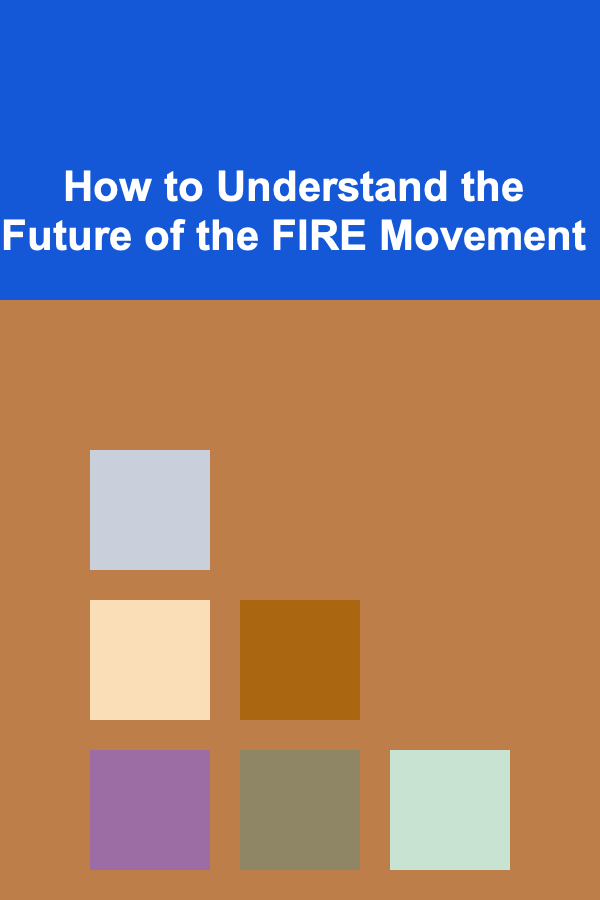
How To Understand Web3 and Its Connection to Crypto
ebook include PDF & Audio bundle (Micro Guide)
$12.99$9.99
Limited Time Offer! Order within the next:

The digital landscape has evolved rapidly over the last decade, bringing with it new paradigms and innovations that promise to reshape how we interact, share, and store information. Among these innovations, Web3 has emerged as one of the most talked-about concepts, particularly in connection with cryptocurrency . While Web3 and crypto are often mentioned together, they are distinct concepts, each playing a pivotal role in the evolution of the internet. This article aims to provide an in-depth exploration of Web3, its relationship to cryptocurrency, and how these technologies are poised to transform the internet, our online experiences, and digital economies.
What is Web3?
The Evolution of the Internet: Web1, Web2, and Web3
To understand Web3, it's important to first understand the evolution of the internet. Over the years, the internet has undergone significant transformations, often referred to as Web1 , Web2 , and now Web3.
- Web1 (The Static Web): The first phase of the internet was primarily static. Websites were simple, read-only pages that did not allow much interaction. Information was primarily consumed, not created by users. Web1 is essentially the "read-only" phase, where the internet was a collection of documents and static content.
- Web2 (The Social Web) : Web2 marks the internet's transformation into a more dynamic and interactive space. This phase is characterized by the rise of social media , user-generated content , and platform-based services. Companies like Facebook, Google, Twitter, and Amazon leveraged centralized platforms to control user interactions and monetize data. Web2 is the "read-write" phase, where users can create content, interact, and engage in services, but they are still largely under the control of centralized entities.
- Web3 (The Decentralized Web) : Web3 is a vision for the next evolution of the internet, one that aims to be more decentralized , open , and user-controlled. The concept behind Web3 is to give users greater autonomy over their data, identity, and digital assets. In Web3, users can interact with each other directly (peer-to-peer) without relying on intermediaries, and the systems that run Web3 applications are decentralized, often leveraging blockchain technology.
Web3 promises to shift the power from centralized companies to individuals, offering more control, privacy, and security. This is where cryptocurrencies come into play, as they are an essential part of this new decentralized internet.
What Makes Web3 Different?
Decentralization
At the core of Web3 is decentralization . Unlike Web2, where data and platforms are controlled by centralized entities (such as Facebook or Google), Web3 applications are designed to be decentralized. This means that no single entity has complete control over the network or the data being shared. Instead, Web3 utilizes blockchain technology to distribute control across a network of nodes, making it more resistant to censorship and centralized oversight.
In Web3, individuals own their own data. The idea is to give users control over how their data is used, who has access to it, and how it is shared. This contrasts with Web2, where platforms harvest and monetize user data, often without explicit consent.
Blockchain Technology
Blockchain is the foundational technology behind Web3. At its core, blockchain is a decentralized, distributed ledger that records transactions across multiple computers. Each transaction or record is stored in a "block," and these blocks are linked together in a chain---hence the name "blockchain."
Web3 applications (also known as dApps , or decentralized applications) often use blockchain to ensure transparency, security, and trust. For example, when you interact with a Web3 application, your transactions are recorded on the blockchain in a way that is immutable (cannot be changed) and publicly verifiable.
The blockchain acts as the backbone of Web3 by enabling trustless interactions. In a trustless system, participants do not need to trust a central authority (such as a bank or a tech company) because the blockchain ensures the accuracy and legitimacy of transactions.
Smart Contracts
One of the most innovative aspects of Web3 is the use of smart contracts. These are self-executing contracts where the terms and conditions are directly written into code. Smart contracts automatically enforce the terms of an agreement without the need for intermediaries.
For example, in a Web3 application, you could set up a smart contract that automatically transfers ownership of a digital asset (like an NFT) to another person once they send a payment in cryptocurrency. This removes the need for a trusted third party like a bank, lawyer, or notary.
Smart contracts enable a wide range of decentralized applications (dApps), such as decentralized finance (DeFi) platforms, decentralized exchanges (DEXs), and even decentralized social media platforms.
Tokenization and Digital Assets
Web3 introduces the concept of tokenization, where real-world or digital assets are represented by tokens on a blockchain. Tokens can represent anything of value, including cryptocurrencies, digital art (NFTs), real estate, and even intellectual property.
In Web3, users can own, trade, and transfer tokens directly between one another without relying on traditional financial institutions or intermediaries. The use of tokens allows for more efficient, transparent, and secure transactions across a decentralized network.
Understanding the Connection Between Web3 and Cryptocurrency
Cryptocurrency is an integral part of Web3. Without cryptocurrencies, many of the core functions of Web3---such as decentralized finance, tokenization, and smart contracts---would not be possible. Let's explore the key ways in which Web3 and cryptocurrency are connected.
Cryptocurrencies as the Fuel of Web3
Cryptocurrencies, such as Bitcoin and Ethereum, are the native currencies of their respective blockchains. These cryptocurrencies are used to pay for transactions, interact with decentralized applications, and incentivize network participants.
For example, Ether (ETH) , the cryptocurrency of the Ethereum blockchain, is used to pay for transaction fees and execute smart contracts within the Ethereum network. Without Ethereum and its cryptocurrency, Ethereum-based decentralized applications (dApps) would not function.
In addition to serving as a medium of exchange and transaction fees, cryptocurrencies also play a vital role in governance within Web3 ecosystems. Many Web3 projects utilize governance tokens that allow users to vote on the future direction of a project, changes to protocols, or new features. These tokens are a way for users to have a say in how a decentralized platform evolves.
Decentralized Finance (DeFi)
One of the most significant innovations in Web3 is Decentralized Finance (DeFi), which aims to recreate traditional financial services (like lending, borrowing, and trading) on decentralized blockchain networks without the need for banks or other intermediaries.
In a Web3-powered DeFi platform, users can lend their cryptocurrency to others in exchange for interest, borrow crypto assets, and trade assets all without involving a centralized institution. Instead, smart contracts automate and enforce the terms of these transactions. The use of cryptocurrency within DeFi protocols enables fast, secure, and transparent financial services.
Non-Fungible Tokens (NFTs)
Another major development in Web3 is the rise of Non-Fungible Tokens (NFTs). NFTs are unique digital assets that are represented on a blockchain, typically on the Ethereum network. NFTs can represent anything from digital art, collectibles, virtual land in video games, to even real-world items like real estate.
The relationship between Web3 and NFTs is clear: NFTs leverage the decentralized and transparent nature of Web3 to enable users to buy, sell, and trade digital assets in a way that is secure and verifiable. Without cryptocurrency, NFTs would not have a way to be bought or sold, as transactions rely on the use of tokens.
Web3 and the Future of Digital Ownership
Perhaps the most important connection between Web3 and cryptocurrency is digital ownership. In the Web2 world, platforms like Facebook, Twitter, and Instagram control the content that you create. Your data, photos, and posts are owned by these centralized platforms, and they can be monetized or removed at their discretion.
In Web3, users regain ownership over their data and digital assets. Cryptocurrencies and blockchain technology make it possible for individuals to directly control their content and financial assets. For example, users can hold and trade digital art in the form of NFTs without relying on a third party to verify ownership. Web3 promises a future where you have more control over your digital life, and cryptocurrency is the means by which this control is exercised.
The Challenges and Future of Web3
While Web3 holds immense potential, there are still several challenges that need to be addressed before it becomes mainstream.
Scalability
One of the biggest challenges facing Web3 is scalability . Current blockchain networks, like Ethereum, can process only a limited number of transactions per second. This creates issues when demand for blockchain services rises, such as during times of high trading activity or when a popular decentralized application (dApp) gains traction. Solutions like Layer 2 scaling and sharding are being developed to address these scalability issues.
Regulation
As Web3 grows, governments and regulatory bodies are beginning to look at how to regulate decentralized technologies. This includes cryptocurrencies, smart contracts, and DeFi platforms. Striking the right balance between enabling innovation and protecting consumers will be a key challenge in the coming years.
User Adoption
For Web3 to truly take off, it must become user-friendly and accessible. Right now, many Web3 applications require a certain level of technical knowledge to use. For example, interacting with decentralized applications often requires users to manage their private keys and cryptocurrency wallets. As Web3 technology becomes more refined and mainstream, making these tools more intuitive will be essential to attracting a broader user base.
Conclusion
Web3 represents the next phase of the internet, promising to create a more decentralized, open, and user-controlled digital space. Its connection to cryptocurrency is undeniable, as blockchain technology, tokens, and cryptocurrencies provide the infrastructure necessary for decentralized applications, smart contracts, and digital assets.
The future of Web3 and cryptocurrency holds immense promise, but challenges remain in terms of scalability, regulation, and user adoption. However, as these technologies continue to evolve, they offer a vision of an internet where individuals have more control over their data, their financial assets, and their online experiences. In many ways, Web3 and crypto are not just about technological advancements---they are about empowering individuals and creating a more equitable digital economy.

How to Maximize Space in Small Rooms
Read More
How to Organize a Family Sports Day in Your Backyard
Read More
How to Use Color Coding for Quick Organization
Read More
Staying Positive: Developing a Winning Mindset for Job Search Success
Read More
How to Understand the Future of the FIRE Movement
Read More
How to Reduce Overthinking
Read MoreOther Products

How to Maximize Space in Small Rooms
Read More
How to Organize a Family Sports Day in Your Backyard
Read More
How to Use Color Coding for Quick Organization
Read More
Staying Positive: Developing a Winning Mindset for Job Search Success
Read More
How to Understand the Future of the FIRE Movement
Read More